#for an explanation 에 and 애 are pronounced basically the same
Text
in 7th grade i started trying to learn korean, decided it was too hard, and gave it up in favor of spanish (for good reason, i'm hispanic and wanted to be able to communicate with my grandfather and his side of the family) but now here i am again trying to learn it
i'm saying this cause i forgot how frustrating 에 and 애, and 외, 의, and 위 are and it's pissing me off
#there were several other languages sprinkled in between then and now too#i want to learn so many languages#it makes me sad that i probably won't be able to#i struggle enough with spanish#i know realistically i'm not gonna get anywhere with korean#but i can dream#like for a while i could have simple conversations in esperanto#forgot it all though#which is my biggest problem#shit memory won't let me learn languages#for an explanation 에 and 애 are pronounced basically the same#same for 의 and 위 and i always mix up 위 and 외#like i'm sure when you've been speaking the language for years you can hear the difference#but i can't and it's frustrating#other languages i've tried to learn include russian french italian and norwegian#and i still have a very real desire to learn them#i just get hyperfixated on a new language and have to switch#which is another problem#but i'm still very much trying to learn spanish#i think the korean is more just to make me feel good about myself or something#idk man. but yeah dreaming about learning languages is fun but actually doing it isn't because my brain won't cooperate#also disclaimer i might have gotten the korean wrong and like mixed it up or something#if so i'm sorry#going back to a previous point#though#there are so many more languages that i want to learn too i just haven't tried yet#like dutch and japanese#fuck man i love languages i just can't do shit with them#stupid stinky brain said no :(
4 notes
·
View notes
Text
Korean Pronunciations Tips
These are some tips on how to sound more natural when speaking Korean. Please note that these aren't official rules by any means, just my personal opinions about some things I've picked up from many hours of listening to the language!
Diphthongs
Diphthongs are sounds created when vowels flow into each other (ex: oi in coin, ai in hair). The English language uses these a lot more than Korean, since even the basic individual English vowel sounds are actually diphthongs.
For example, try slowly pronouncing the letter a, and listen to the way it actually slides from eh to ee. In Korean, this sound doesn't exist on its own, but it can be created by combining 에 and 이 -> 에이.
So even though these diphthongs don't really exist in Korean, they can often be heard in everyday speech. For example, something I've noticed is that, when used at the end of a word, 에 and 애 are sometimes pronounced more like 에이 or 애이, and 오 is sometimes pronounced more like 오우. My personal theory is that this is a result of English influence.
My point in all this is that, although it is generally taught that the Korean vowel sounds are short and tight, with no flowing of different sounds into one another, the pronunciation of the language in everyday life can be different!
봐 or 바 ?
This one is simply a matter of speed and ease of pronunciation. While the syllable 와 is a combination of 오 and 아, a distinct 오 sound isn't usually heard when the word 봐 is spoken, so it sounds more like 바.
Similarly, the syllable 왜 is a combination of 오 and 애, but the 오 is not distinctly pronounced when a consonant comes before 왜. For example, the word 안돼 often sounds more like 안대.
This isn't a huge deal, but I find it helps your pronunciations sound a lot more natural and closer to that of a native speaker if the 오 isn't so clearly pronounced in these sounds. It's still there, of course, but it sort of takes a back seat.
Disappearing Consonants
As we've already looked at with vowels, some sounds are disregarded for speed and ease of pronunciation. In the following cases, I believe this is due to the same consonant appearing more than once in a word, so one of the occurrences is ignored.
For example, something I've heard many times is the word 맛있어 pronoinced as 마있어. I could never find a solid explanation for this. My theory is that the ㅅ in 맛 is disregarded because the ㅆ in 있어 comes right after.
Another slightly less common example is 것 같아 being pronounced as 거 앝아. Again, my theory is that the ㄱ in 같아 is disregarded because of the ㄱ in 거 that comes right before.
Again, this is not a very big deal, and not every native Korean speaker does these, but it is something I've picked up on that may help you sound more natural and comfortable with the language.
Slurring
If you've listened to any Korean spoken in a natural situation rather than an educational one, you've probably noticed that native Korean speakers slur their words. A lot. To the point where some words are almost unrecognizable. In terms of listening and understanding, this makes things a bit difficult. It's also something to keep in mind when speaking.
The most common example is 안녕하세요. I have never once heard a native Korean person pronounce each syllable of this word clearly and distinctly. Slurring is already normal, but the fact that this is one of the most used words means that it's likely to be understood no matter how intensely you slur.
I suppose for a beginner it would be a good idea to start out with clear pronunciation to help you communicate better and fully understand what you're saying. But I think the more you get used to speaking the language, the easier it will be to emulate this natural slur.
-
I hope this was helpful! I'll be sure to add more tips to this post if I think of any.
-
163 notes
·
View notes
Text
[TEXTBOOK REVIEW] Integrated vs. EWHA
In the 5-ish years I’ve been off and on studying Korean, I’ve largely worked with Talk to Me in Korean, Integrated textbooks, and EWHA textbooks. I’ve never felt the need to venture into other textbook series (though I’ve been peeking through and I guess technically working with another since coming to Korea, but only in a sense of review.) Good textbooks differ for person to person - we all learn in our own styles and need things presented to us in different ways.
This system has been invaluable to me. As a self-studying learner, the kind of textbook you use is really important, because most of us don’t have a teacher to correct us or further explain things, and likewise, many of us don’t have a Korean friend or Korean-speaking friend to assist along the way. I’ve been lucky to have friends to help, but still, the textbook I used was very important for this.
Thus, I have a hopefully detailed and terribly picture heavy review of both Integrated and EWHA textbook series and how they compare to each other or how you as a learner can utilize them together or with other books!
When I got my first textbooks, I’d already taught myself to read and write Hangul and had been working quite a while with Talk to Me in Korean. As a result, I was a bad student and skipped a lot of the stuff at the beginning of the textbook. If you’re a new learner: DON’T DO THIS! There’s a lot of invaluable information, especially in the Integrated series. I’ve brought my beginner book to language exchanges before and have swayed a few people into buying some of the books I use because they found the beginning information alone to be hugely beneficial.
My first textbooks were the Beginner Integrated series. My decisions were based on the fact that I already had friends using these books - it would make it easy for me if I had questions, as they’d already worked with these before - and also the price. At the time I got them, I was able to get both Beginner 1 and 2 for about $35. Unfortunately, that was 5-ish years ago and the price isn’t quite as low and is much more on par with other textbooks.

Please don’t mind how old and beaten up looking it is; this guy and I have been through a LOT together!
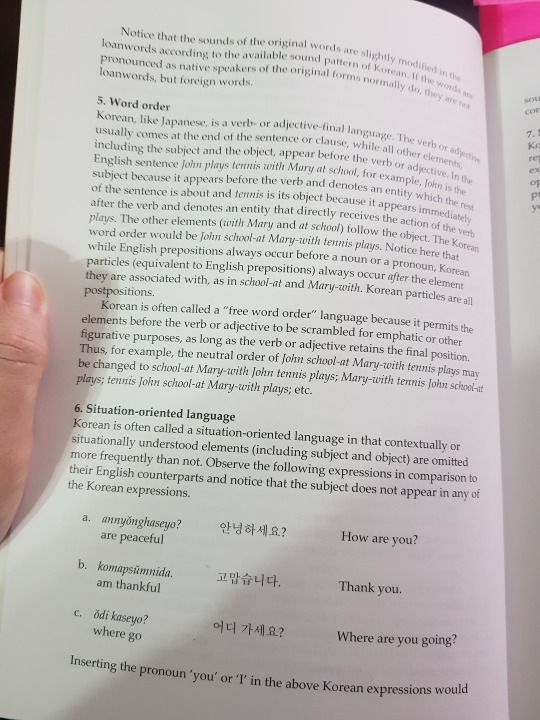
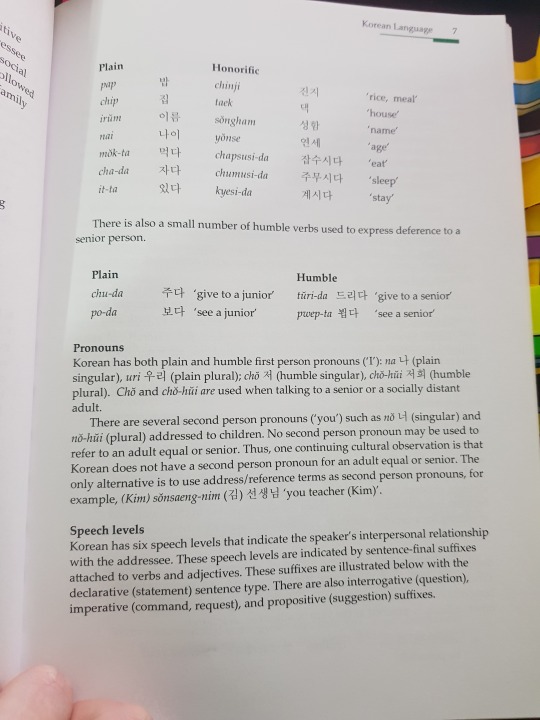
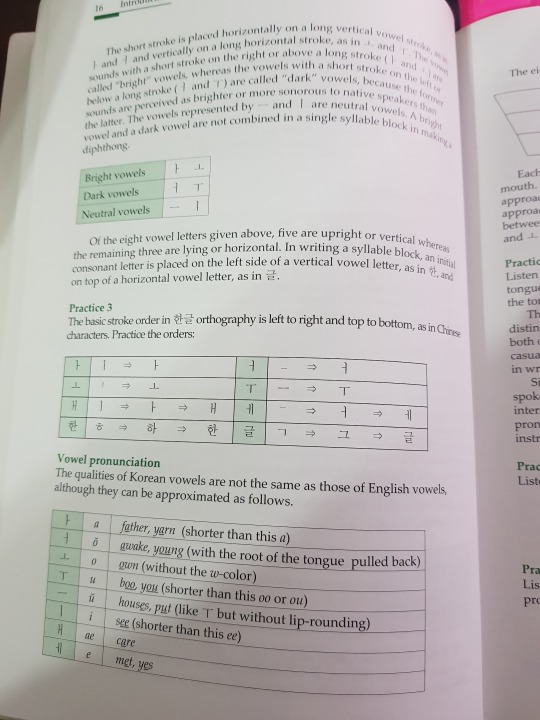

This is the stuff I skipped when I first got the book, and frankly, would have been invaluable to my learning. From the way I taught myself to pronounce Hangul, even these days I still have to push myself to differentiate my 으 from 우. But visually seeing how these sounds are formed is really important, especially for beginners. There’s a lot of sounds we as foreigners and especially as beginners struggle to differentiate. When I help at Diana’s classes, I find a lot of people have issues with 어 and 오 - let alone 에 and 애 and further 스 or 쓰. Of course it’s not a foreigner only thing; at the language exchange, while helping Koreans with pronunciation, I’ve found they sometimes hear things that aren’t there or can’t differentiate certain sounds, either. That’s just language. But knowing how to say things not only helps your pronunciation but when you’re talking to someone, watching the way they speak can help you differentiate sounds as yours ears get used to it.
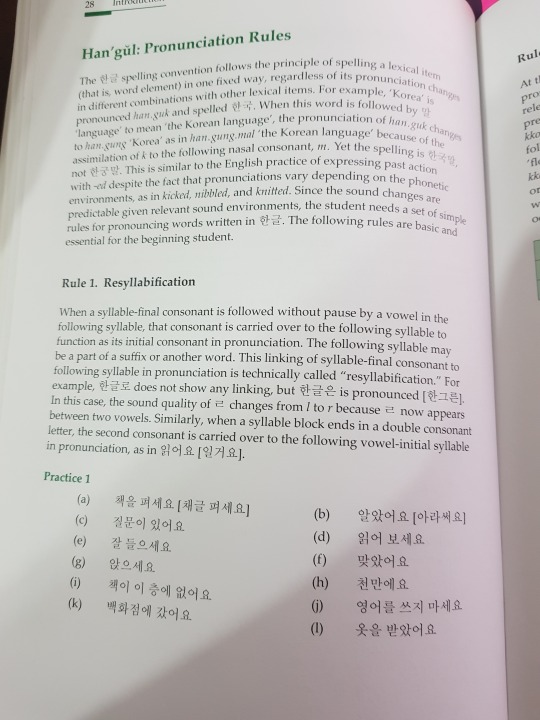

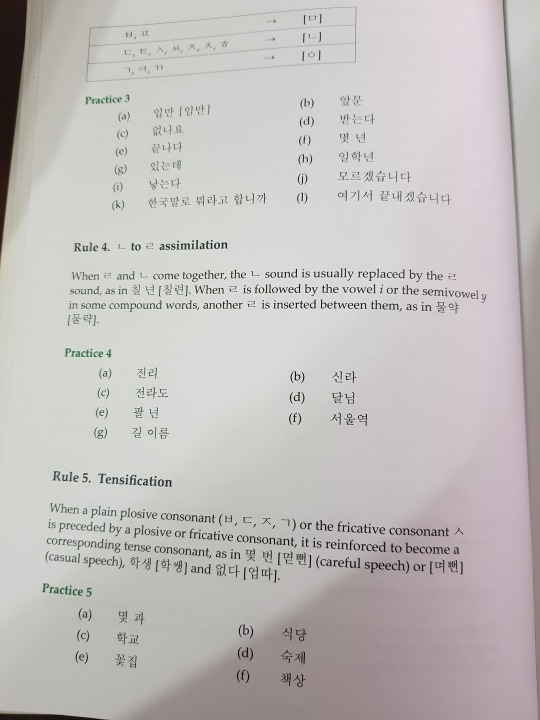
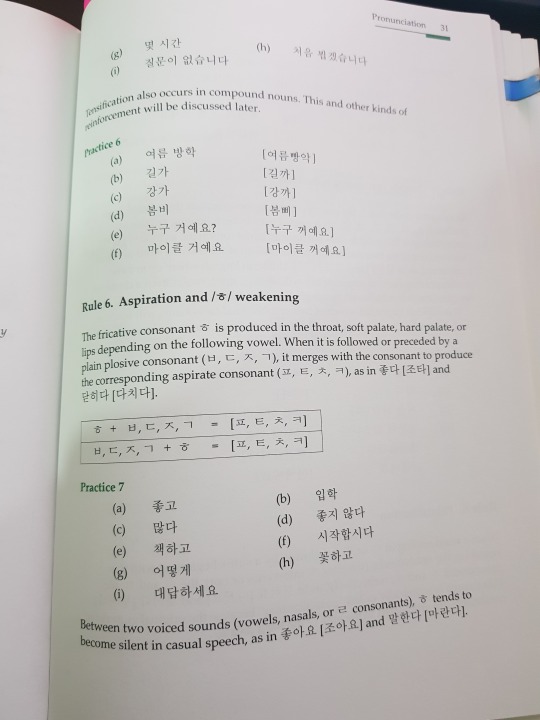

It’s actually quite extensive. Again, if I’d read the beginning, I would have figured out things like resyllablfication - a mouthful that simply means consonants carry over into empty spaces to make pronunciation MUCH easier. Instead, I spent a good while mispronouncing everything and wondering why speaking was so difficult.
Now let’s get into the good stuff!
Integrated is set up into Lessons that are then broken up into 2 conversations/dialogues. After each conversation, you’re given a new word bank, and some new words and expressions in your notes. After that it’s a couple to few pieces of grammar. Sometimes that grammar is a full grammar piece (like a sentence ending), sometimes it’s a particle, sometimes it’s about irregular /ㄹ/ or /ㅡ/ or something.
Typically, integrated is very detailed. There’s usually a lot of notes, examples that show varieties of way of use, and then exercises! I never got a workbook with Integrated so I can’t tell you much about it, but because a. I had no one to check it and b. I have so many exercises in the book, I didn’t regret this. A friend of mine who has used integrated told me that she feels the exercises in the book are sufficient enough because they’re very similar to what you see in the work book anyway.
Let’s have a look!
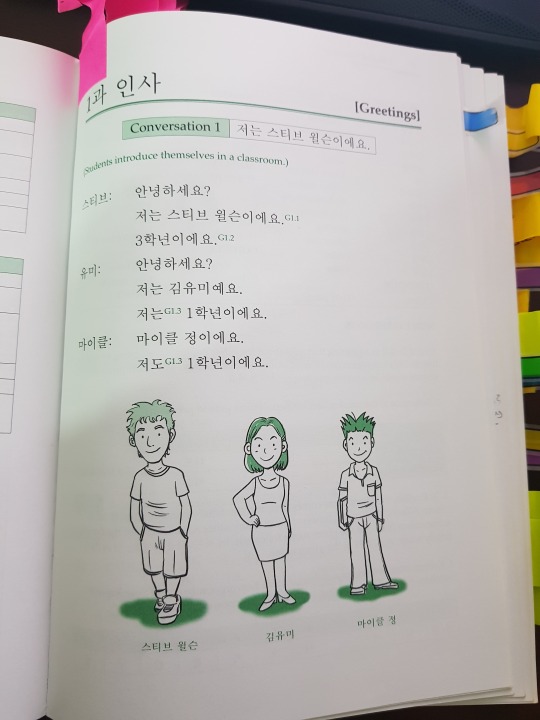
Look how short these dialogues start out. Ahh, nostalgia~
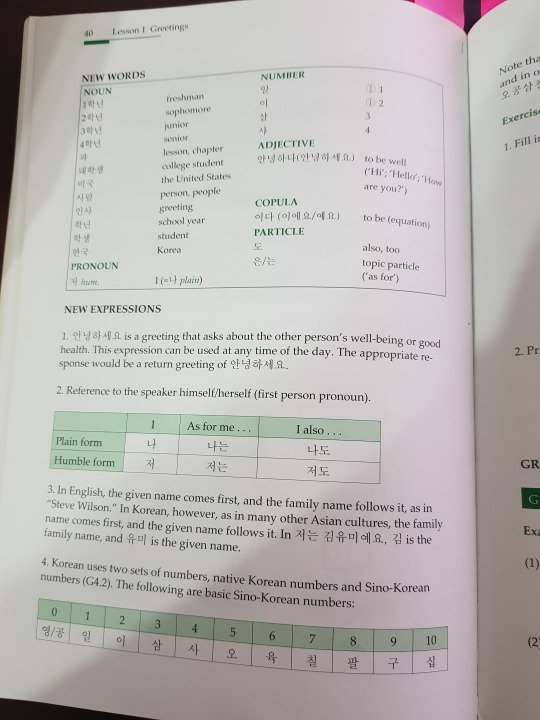
The word bank is always sorted by word type, which becomes useful when you get further in and realize that sometimes adjectives are conjugated differently from verbs! The New expressions heading usually is followed by really useful stuff that doesn’t always warrant its own grammar lesson but still is relevant to your learning.

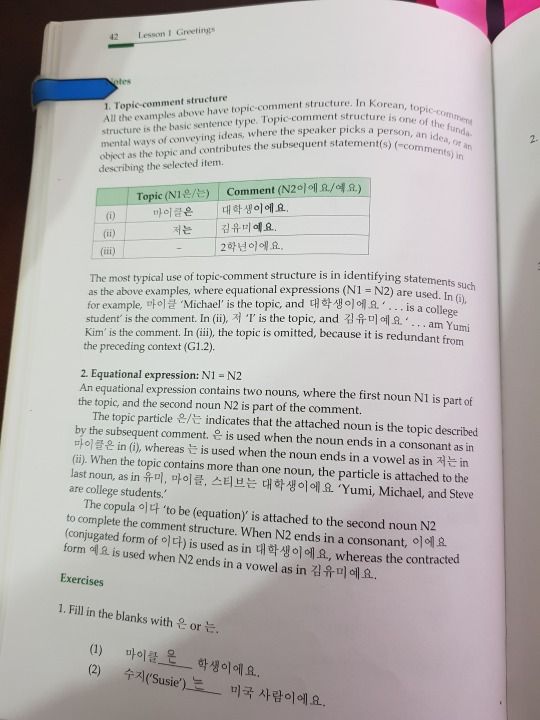
Grammar is always introduced first by examples and then explained in the notes. As you can see, Integrated can be very verbose in its explanations. For some people, this is beneficial. Others, not so much. I tend to like to learn my grammar inside and out; I’m not that great at learning by example or inferring reason, so this very verbose manner of explanation is great for me. Also, I have a tendency to overthink things, so when it’s laid out, it helps.
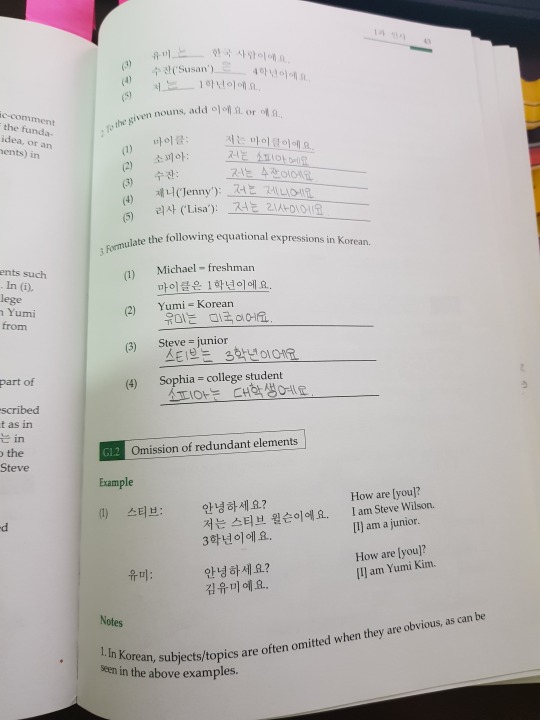

The end of the lesson is always presented with a narration that uses all of the grammar you learned in the past lesson and whatever the lesson’s central theme was (university life, transportation, food, etc.) There’s comprehension questions and activities. But the best part of the end of the lessons is all the stuff they tack on!
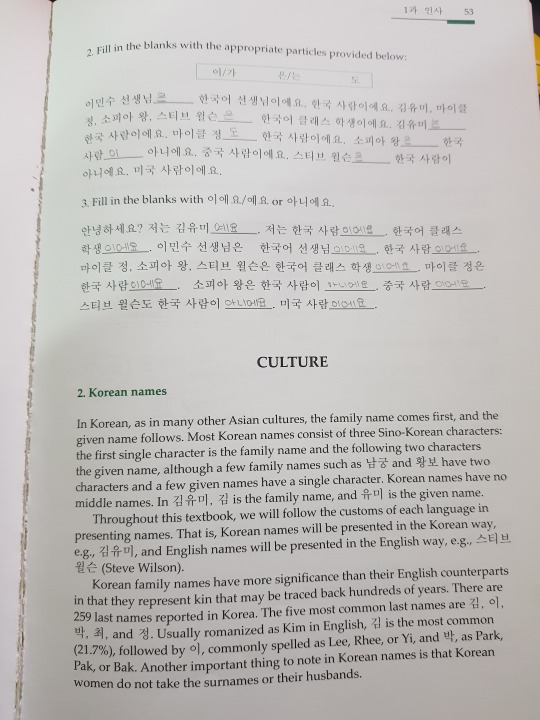

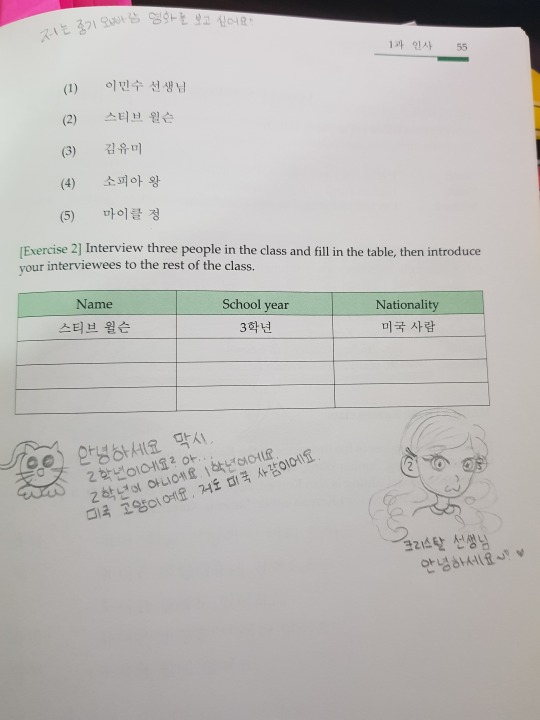
Ignore the doodles, pls. And the notes. I was a mess, okay!
The end of the lesson always features some kind of culture lessons where they teach you various matters about life in Korea and Korean society. It also goes further into detail about usage. Language is not a one way kind of thing. The way initially presented in the textbook is not the only way to say or express things. Further, it has more activities that build upon what you’ve done throughout the lesson. See why a workbook is virtually unnecessary?
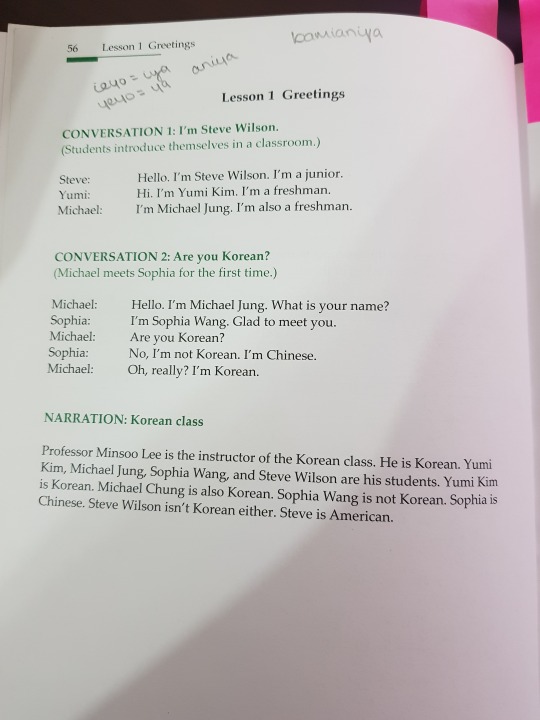
Importantly, the end of the lesson has conversation translations. As you can see, there’s no answers for the exercises, which could be a make or break thing for people. Having no one to correct it makes it hard to utilize the exercises.
Despite the fact that the book lacks answer keys, I find Integrated has been invaluable to my learning. Admittedly, I may be biased because of the time I’ve spent with these books, and thus I’ve grown fond, but even in retrospect I still feel they were and are incredibly useful.
Integrated textbooks are thicker than my EWHA textbooks - they're roughly the size of 2 EWHA books, which seems to make sense because Integrated has two beginner books and I believe for EWHA, level 1 and 2 are considered beginner and 3 seems to start on an intermediate level. As Integrated books are so big, they’re full of information. FULL! The first beginner book alone presents quite a lot of conversational grammar and vocabulary and beginner 2 (what I would think of as high beginner to myself) further expands on it.
Admittedly I was the most inconsistent studier until I came to Korea, so it’s probably unsurprising that I’ve worked out of these two books for the entirety of the time I’ve been learning. In fact I only JUST made it into my Intermediate books. I have a lot of reasons for that, but the point I’m trying to make is that I’ve spent all these years able to use the grammar and vocabulary from these books, so it’s really quite beneficial in my eyes.
(A comparison, for example, is the book my friend teacher Diana uses. Her lessons follow Beautiful Korean, a book that has 3 books in the beginner series, I believe, and each costs 16,000 won. Considerably cheaper, sure, than Integrated Beginner coming in at 30 a piece. But when you consider again that Integrated is the size of 2 textbooks, the price seems to even out. Further, Through us using Beautiful Korean, most of what we learned was only pronunciation and vocab. Only at the beginning of the 1-1 lessons were introductions and the most basic sentences and structures introduced. The actual act of making sentences and grammar doesn’t show up until 1-2. So further, if you consider comparison, you need all 3 books from the beginner series of Beautiful Korean to possibly probably equate to Beginner 1 and maybe 2? idk I haven’t seen what comes after Beautiful Korean 1-3; it might still be beginner level for all I know! That’s not to put down the Beautiful Korean series at all but as far as values, when you consider all 3 books will cost about 48,000 won, Integrated, to me, seems more valuable. But I digress.)
Integrated Beginner 2 stays much the same and follows this same format. In fact, even in Integrated it does, though notably the conversations grow longer and now after each conversation there’s comprehension questions, which is a welcome addition!
That said, EWHA certainly has it’s merits, and my shallow self will admit the fact that they are ever so pretty certainly endears me towards them - but I promise it goes well beyond shallow reasoning.
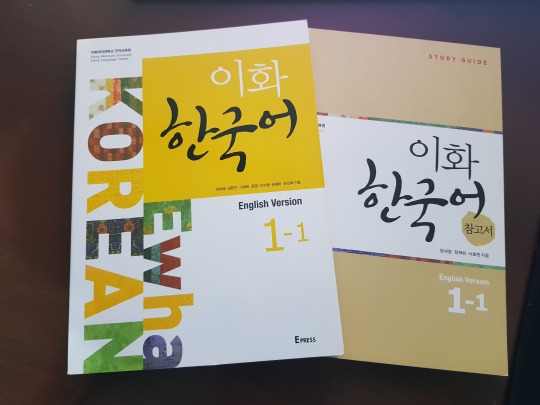
EWHA is best paired as a set with it’s companion study guide. As you will see, EWHA does not go as deeply into explanation about things as Integrated - and thus we have the study guide. Sometimes the study guide doesn’t offer a deeper explanation, either; often it’s unnecessary and as I’ve mentioned before, EWHA seems to want you to understand things through context and by gleaning things yourself. The study guide provides more examples, though, in case an explanation isn’t quite enough; you’re supposed to figure out usage and context with those examples. Sometimes it’s great! It depends on how you learn, to be honest. I find I need lots of examples AND lots of explanation, but I’m trying to learn to mine more from examples without being handheld and spoonfed, but like I said - we all learn in different ways.
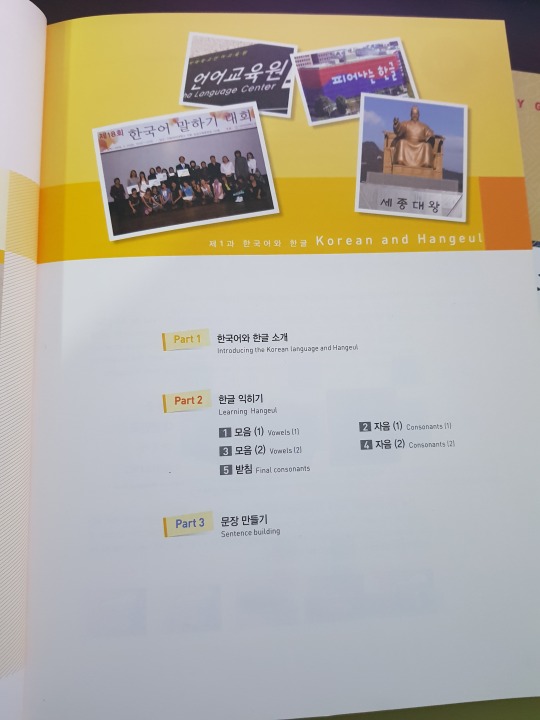
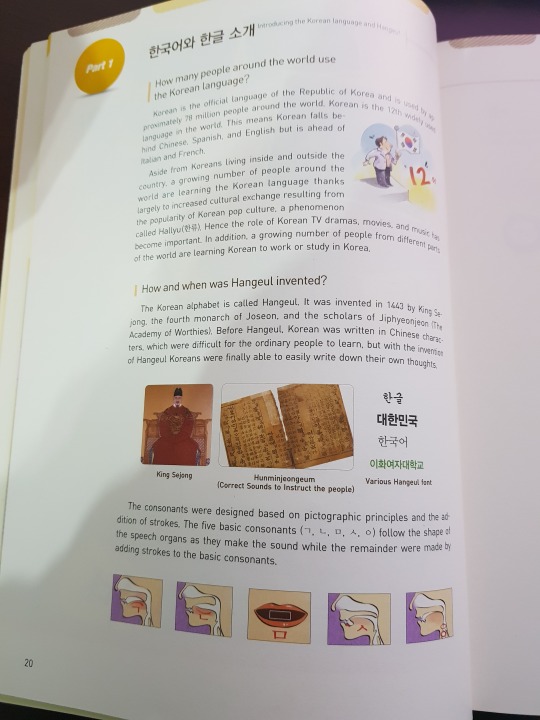
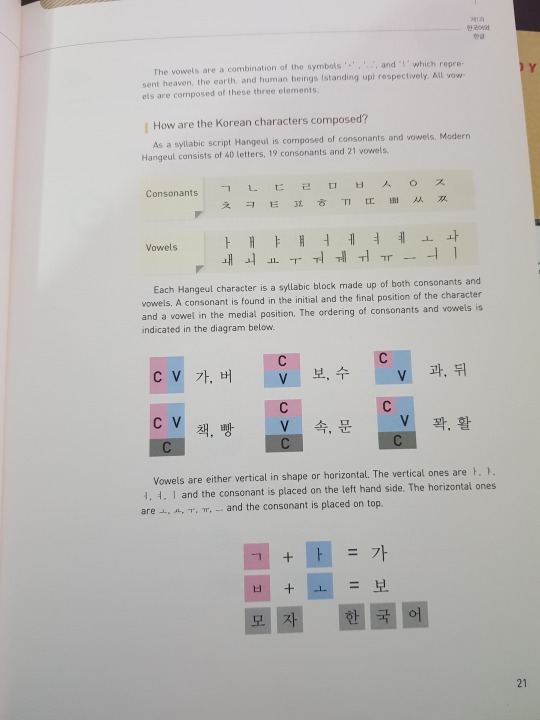
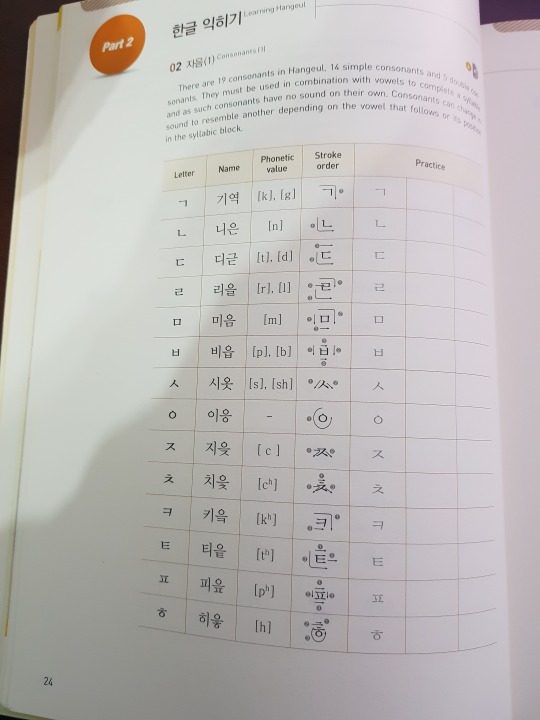
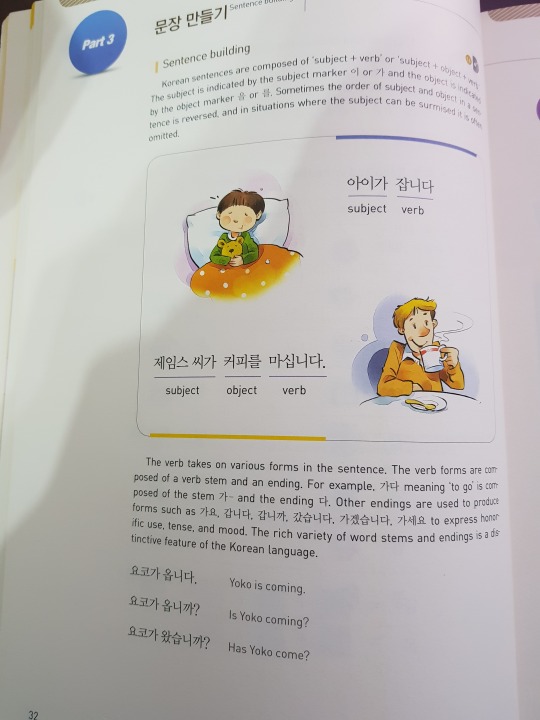
Much as Integrated does, EWHA has a good introduction to Hangeul in both pronunciation and construction. Though I don’t find it QUITE as indepth as Integrated is, EWHA tends to throw little tips at you as you work through the books that Integrated introduces in the beginning, and really you don’t miss much by getting them later.
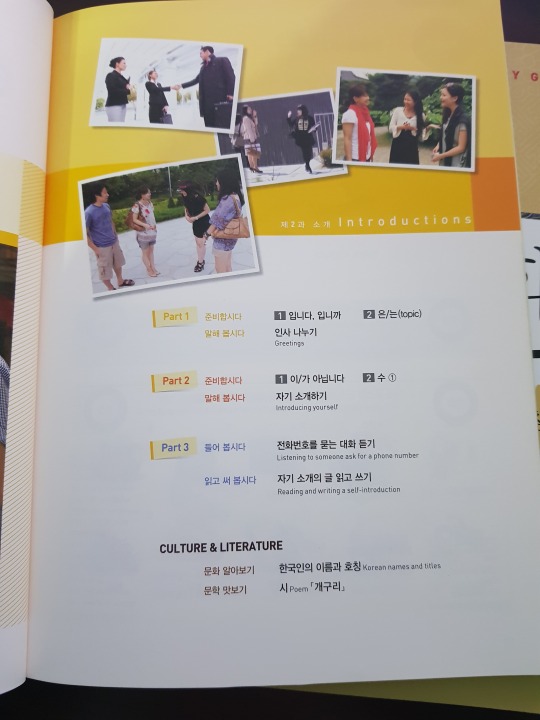
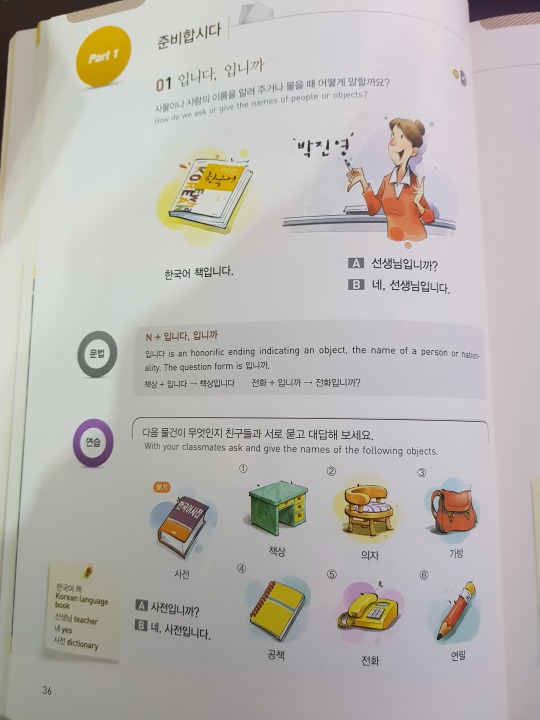

So Integrated is set up in lessons with conversations per lesson. EWHA instead gives you two prep lessons which will lead to a conversation practice. And where Integrated introduces one big word bank per conversation, Integrated just throws them all into your prep lesson. Sometimes it’s big, sometimes it’s small. Something useful that I didn’t do but probably should have was going through the entire lesson and write down the vocab or make flashcards if that’s your thing and review them before you get to them that way they have some familiarity to you. Or, on the other hand, you can go through at the end of the lesson and see which words you remember and then play with the ones you don’t. Your call!
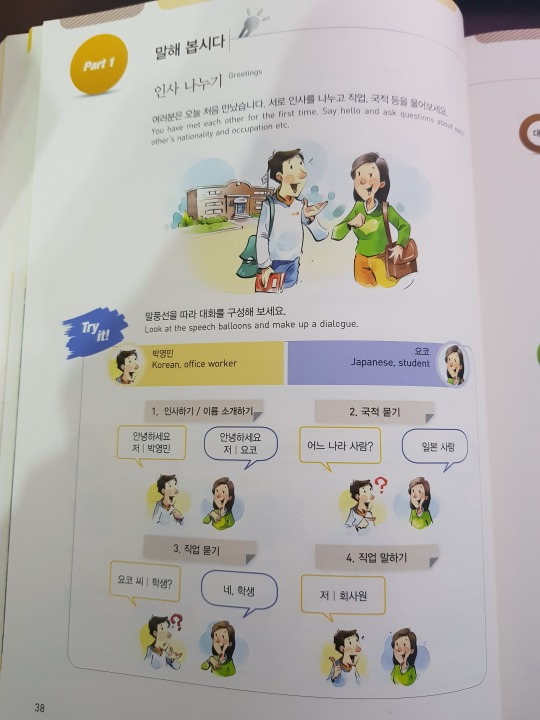
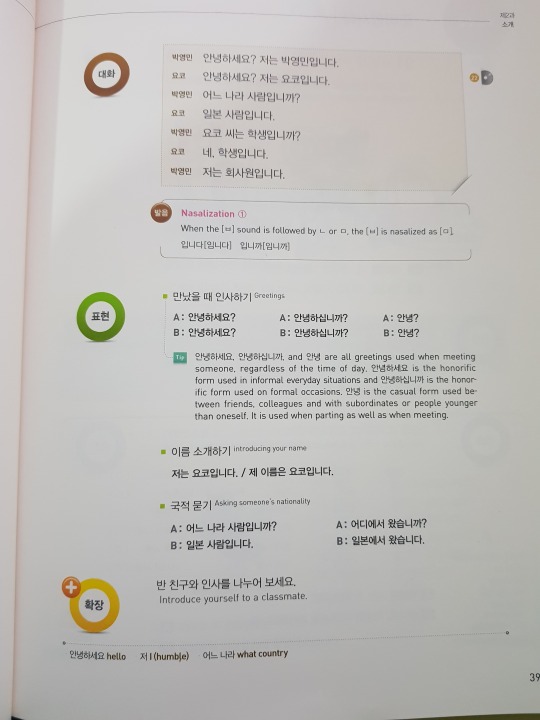
The prep lessons build up to a practice conversation! You get a little information about your roleplay characters and what you’re supposed to be talking about. Basically it’s guiding you and nudging you to use the grammar it’s just introduced to create a conversation. It tells you things like “make a greeting and introduce yourself” “ask their nationality” blah blah and you’re supposed to construct the conversation. On the next page they’ve written out the conversation how they want you to follow it, so don’t look! Cover it up as you try to do it so you don’t rely on just reading it. It’s a really beneficial way of learning to make sentences and especially to think outside of the box of what you’re used to!
As you can see on that page, sometimes they throw in pronunciation tips, which I definitely needed when I first started out! I was lucky I started with TTMIK who do a good job of explaining why ~습니다 is pronounced as ~슴니다 but other things I didn’t learn about until later.
They also give you conversational tips! Obviously you might not be able to figure out the conversation fully on your own, but the book has extras for you. It’s good to try your best and then to check the dialogue and see how or why they came up with what they did. I really like this part, because sometimes I get fixated on one way to say or express something, but as with all languages, there’s many ways to say things! I don’t know why I become so uncreative when I’m trying to construct things in Korean; I guess a sense of unfamiliarity where with English I know exactly how to throw things together. So these are parts are VERY IMPORTANT in really expanding your manner of speech and understanding!
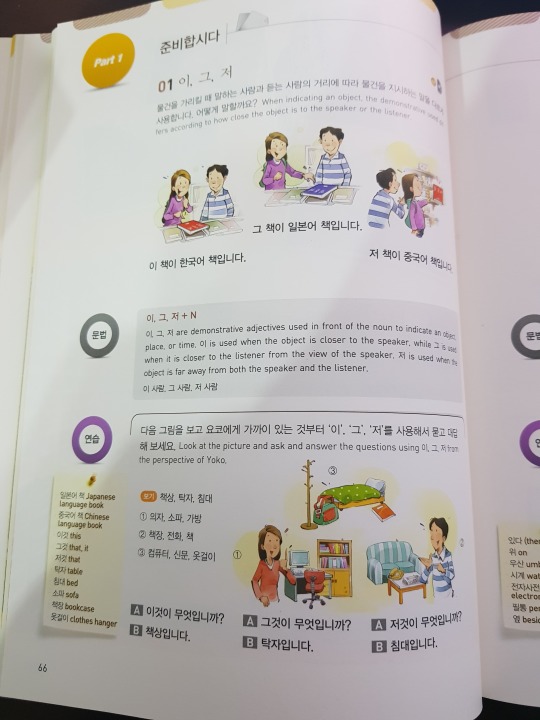
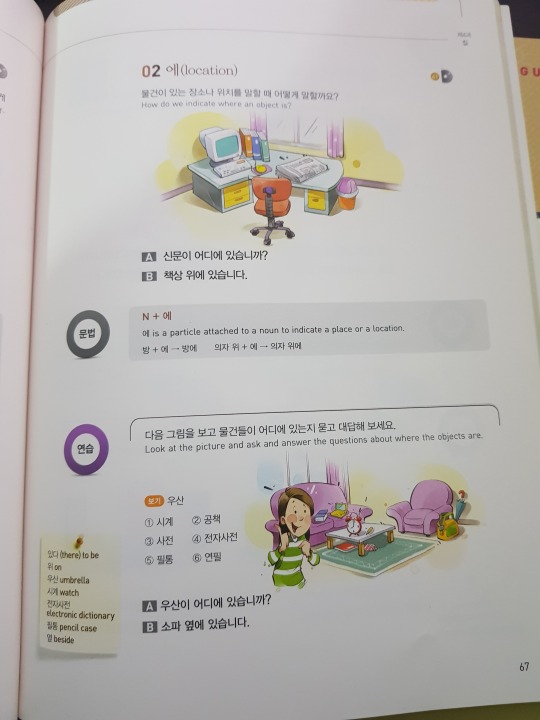
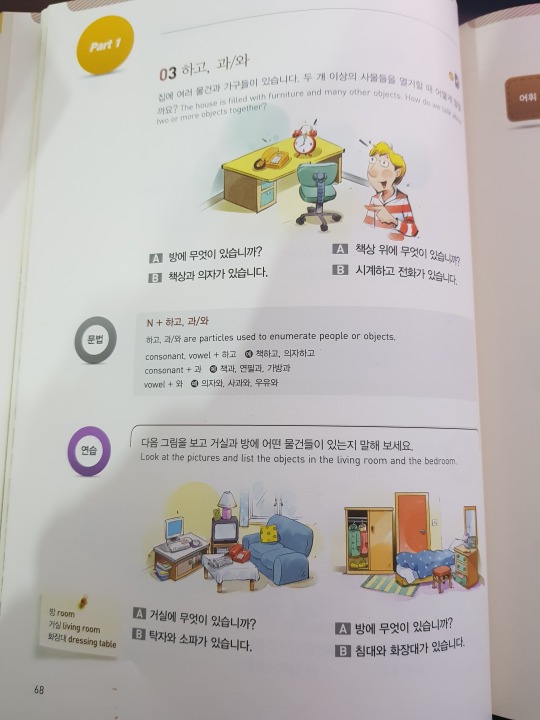
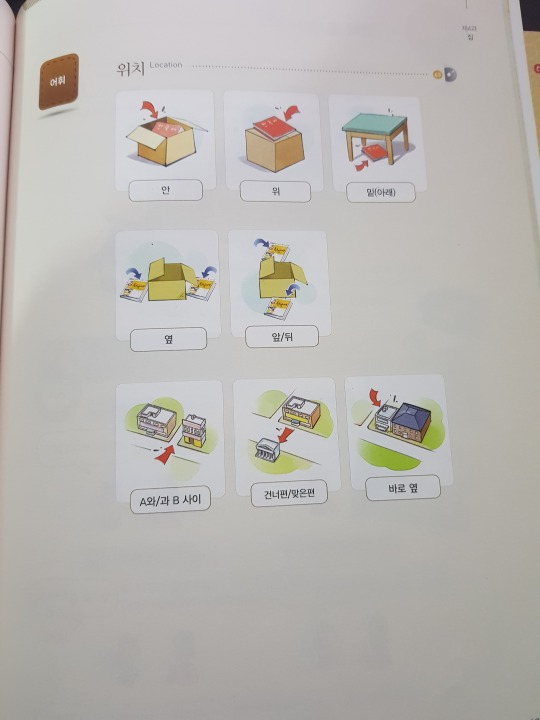
As you can see, it continues this way, following this sort of pattern of prep lessons leading up to a conversation practice. Occasionally, EWHA will throw in a page with images and what they are in Korean. Obviously, you’re supposed to figure out what they are visually but I’ll confess sometimes I’ve had issues with that, but don’t worry; the study guide has you covered! We’ll get to that soon, I promise.


Another example of the conversation practice. Note there’s even MORE vocab at the bottom!
Towards the end of the lesson, there’s always an audio piece that you listen to and answer comprehension questions over and you get MORE fun little expressions like above, except these you’ll have to find in your study guide. It’s really important you get these as a set because if you don’t, you’re lacking an entire half of your EWHA experience - and the study guide just makes it better for self-learners.
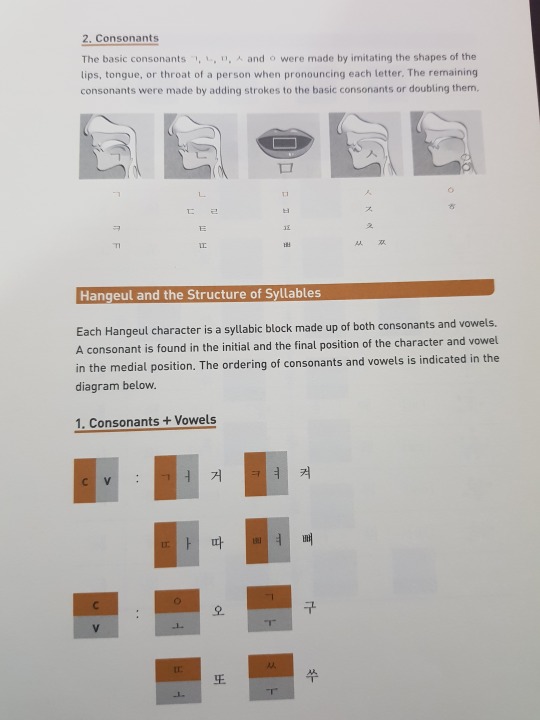
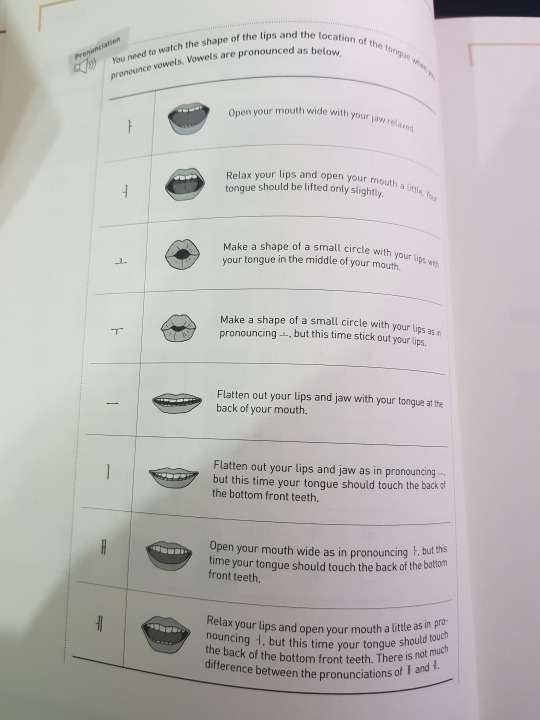
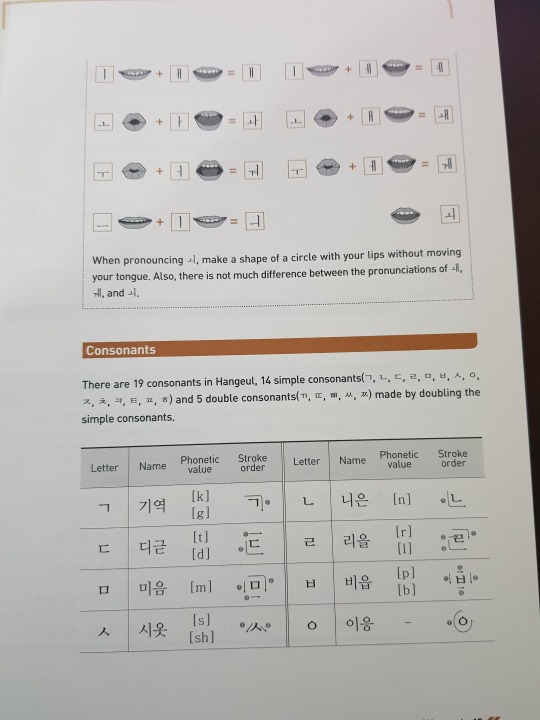
Like the textbook, it also opens with some pronunciation and intro to Hangeul type things. You really aren’t lacking for this kind of stuff, when it comes to these books! It’s also why I always recommend these to beginners! While I am fortunate to currently be in Korea where I can practice and have people help correct me, when I started out self-learning there was no one to do that and I was going off of (terrible) romantization to figure out how to say things. It was bad!

At the end of every lesson, the study guide has a vocabulary check and this! Is! One of my favorite! Things about the study guides!!!!! In the series 1 books it’s very often just words but as you get into series 2, you get phrases and the such which is useful because, again, sometimes I just forget how to construct things I know and it’s nice to see it used in ways that makes you go “ahhh” and helps you make better use.
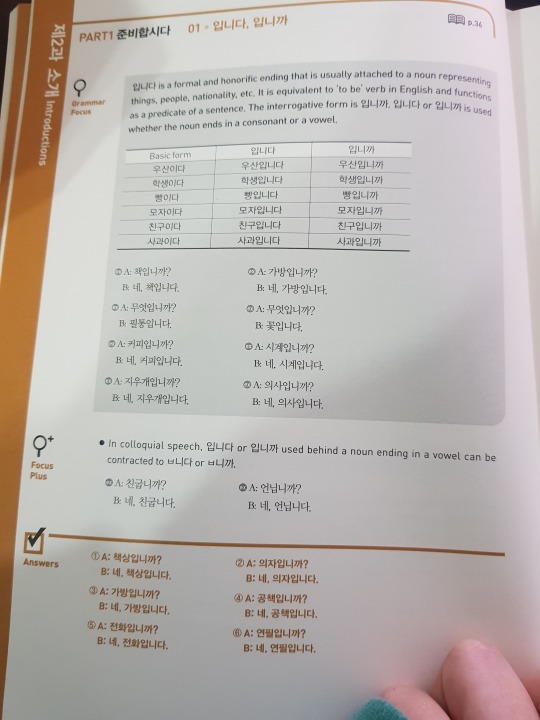
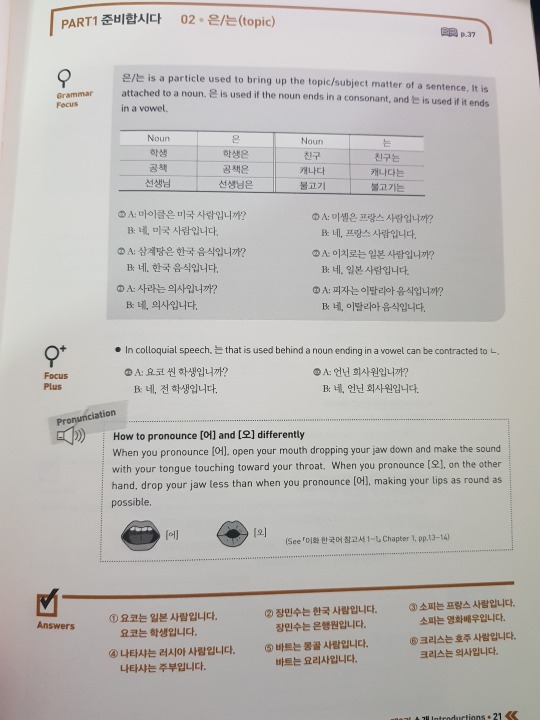
The study guide always shows which pages of the textbook it corresponds to. You can see how there’s a tiny bit of extra information in here; there’s not a lot at this point, because these things don’t necessarily need as much explanation - but there’s plenty of sample sentences! Read the sample sentences! If you’re having a hard time understanding something, reading the samples might be able to help you glean what you’re supposed to be understanding.
As you can see, there’s also an answer key to the activities in the book, which is really great if you don’t have anyone to check your work!

Remember those little expressions in the conversation practice pages? The study guide goes further into depth on them and helping you with your usage. This is the second best part of the study guide! It’s just really full of extras to help you out!
You can also find transcripts for the audio dialogues in here!
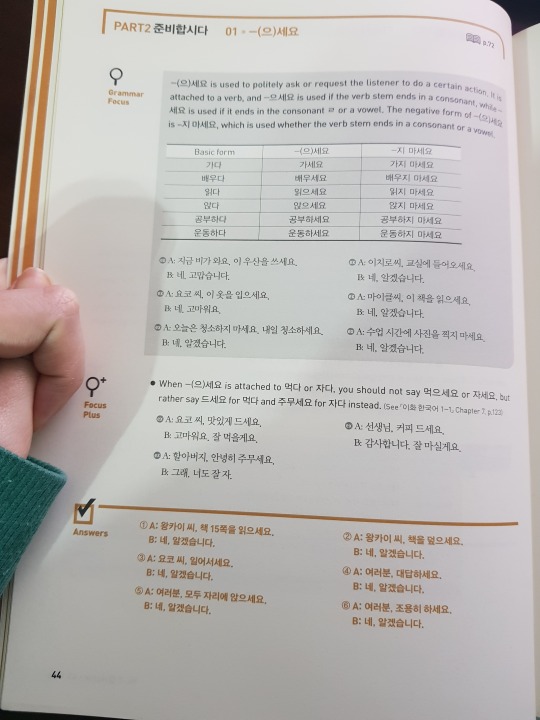
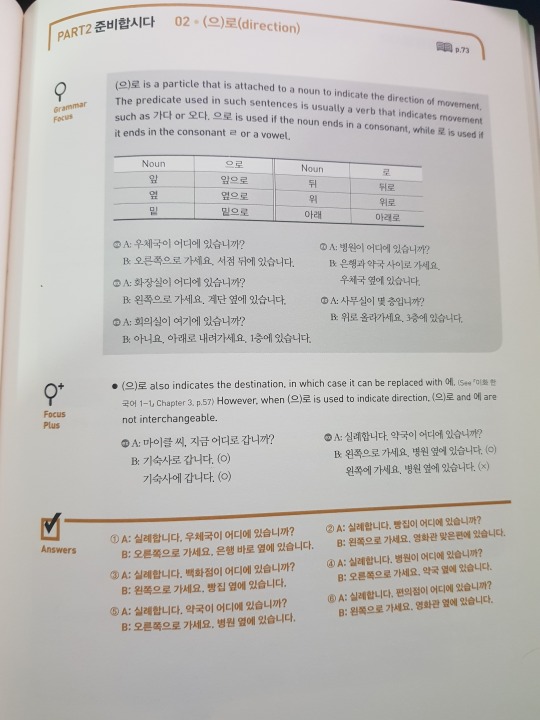
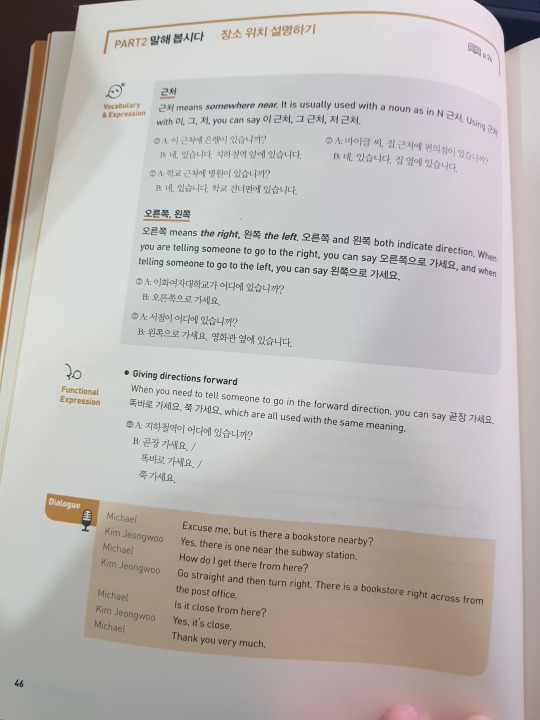
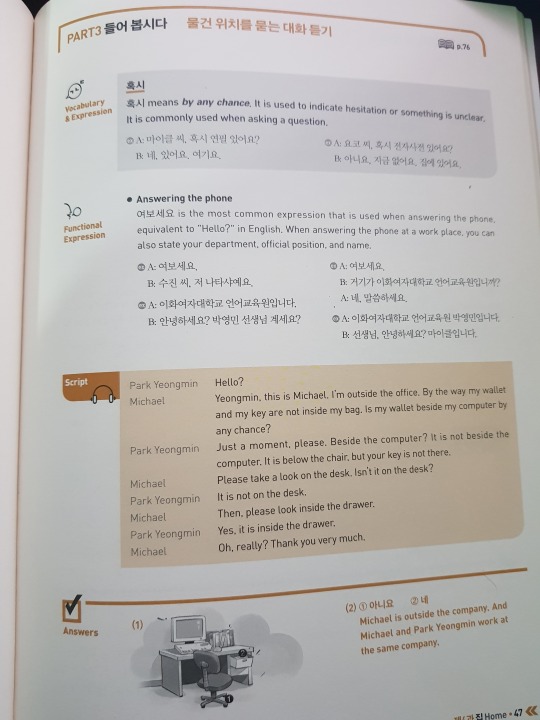

Just a few more samples!
Both sets are really wonderful for learning Korean. I maintain that the “best” one is whichever adheres best to your learning style. If you, like me, require lots of explanation, then Integrated might be best for you. It’s extra full of activities which really negates the need for a workbook. Unfortunately, you need someone to check your work, because while there’s translations for dialogue, there’s no answer key for your activities. EWHA is great for a self-studier in the manner that they DO provide not only transcripts/dialogue translations but also answer keys. Someone who doesn’t necessarily need things explicitly laid out can benefit from EWHA and to be honest, it could probably help people learn TO take meaning through context. Again, if you go with EWHA, you really need the Study Guides as well for the entire experience.
Some things: re EWHA. As you can see above, in books 1-1 and 1-2, your instructions and lesson introductions are written in both English and Korean. By series 2, the English there disappears. You still have English explanations and vocab translations, but your activity instructions and lesson intros are entirely Korean. By series 3, it’s FULL Korean. Your study guide still has English!!!! But your books? Korean! Even the vocab!!!!! I’ll try to remember to add pics of that later. But the idea is, of course, that you’ll learn as you go and eventually you won’t need it entirely written in English. I’m certainly not at that point yet, but I hope I’ll be able to get there soon!
Obviously, textbooks don’t come very cheap, so if you have to choose between the two sets, weigh your pros and cons. That said, the way I use them typically is that Integrated gets prioritized and then when I need a break or a review, I use EWHA. I used to review through Integrated but I find I’m not really taking in anything new when I’m just going over something I remember. By using both sets, I get different vocab sets, different situations, different kinds of usages of the grammar I’m learning. Both introduce things at different times. I’ve learned some things from EWHA that hadn’t been introduced to me at the time in Integrated where sometimes Integrated introduced to me things EWHA wouldn’t for a LONG time get to. But they both give me unique, fresh takes on things I’m learning. I’ve bought my books over a long period of time, so if you DO want to play with both, I’d say start with one set and later on down the line, add the other, so you can spread out the purchases.
Regardless, even if you can only choose one, I think they both have very strong merits as learning tools - and there’s always additional (free) options to help pad out your learning. I still make use of Talk to Me in Korean when I need to review something or I want another take on it or I need another explanation. When I REALLY want to get in-depth with things, I hit up How to Study Korean, where things are really broken down and in-detail explained. Don’t rely on just one study option. If you choose to use a textbook series, pad it out with the free online resources as well! The more ways you can see things used, the better it will stick with you!
I hope this is able to help a little! If you have questions, feel free to ask me! I can try to get some simple comparisons later of Integrated Intermediate level and EWHA series 3 books, and eventually I’ll do some write ups about the TTMIK books I own and the ways I find them useful!
11 notes
·
View notes